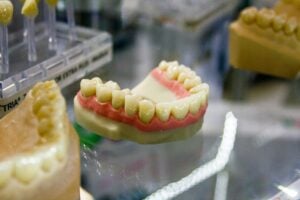The Unreliability of Bitemark Evidence
Bite mark evidence is part of forensic odontology, where dentists, called odontologists, try to match marks found at crime scenes with the dental impressions of possible suspects. For instance, if someone bites a victim during a crime and the police have a suspect, odontologists compare the bite mark with the suspect’s teeth to see if they match.

Even though bite mark evidence is frequently used in criminal cases, there isn’t enough scientific evidence to prove it’s always accurate and reliable. Unlike DNA or fingerprints, there’s no solid proof that everyone’s dental pattern is unique. Bite marks, often seen in serious crimes such as murders and assaults, make investigations tough because human skin can stretch and change the shape of bite marks on surfaces like skin, clothes, and soft tissue. This gets even trickier when victims have multiple injuries because what looks like a bite mark might be from something else entirely.
Another problem with bite mark evidence, similar to analyzing fingerprints and firearms, is that it’s subjective. Different experts might have different opinions about the same evidence. This problem gets worse when experts only use pictures to compare teeth to bite marks. This subjectivity, which is claimed to be absolute science in court, can really sway juries, especially in cases where someone might be wrongly accused.
Nearly 25% of people exonerated since 1989 were wrongfully convicted based on false or misleading forensic evidence. At least 26 people have been wrongfully convicted, arrested, or charged based on the use of bite mark evidence, but there are likely many more innocent people behind bars because of the use of this discredited science.
In 2009, the National Academy of Sciences reported on the significant issues with forensic techniques, including bite mark analysis, pointing out high error rates and a lack of scientific validation. Six years later, Dr. Iain Pretty and Dr. Adam Freeman, former leaders of the American Board of Forensic Odontology, became concerned about the increasing number of wrongful convictions linked to bite mark analysis. To address this, they conducted a study to evaluate the reliability of bite mark analysis in forensic investigations.
The lack of scientific consensus caused Dr. Freemanto to stop his practice in conducting bite mark analysis and instead started testifying in court about the lack of scientific validity underlying bite mark evidence. Dr. Freeman is joined by many other forensic dentists who have also come to the opinion that bite mark evidence is unreliable.
An example of bite mark evidence leading to a wrongful conviction is the case of William (“Bill”) Richards. In 1997, during Bill’s trial, a dentist who studies teeth looked at Bill’s teeth and a bite mark on his wife’s body. The dentist said that only a small percentage of people could have made the bite mark, and he couldn’t say for sure that Bill didn’t do it. But in 2007, the same dentist changed his mind. He said that based on what we now know scientifically, Bill couldn’t have made that bite mark. Even though Bill was found innocent, the District Attorney disagreed and appealed. The California Court of Appeal agreed with the District Attorney, and the state’s Supreme Court also supported this decision because at the time the laws did not have an avenue for raising expert recantations. Then, in 2015, California passed a new law allowing experts to recant. The California Supreme Court finally acknowledged that the bite mark evidence was flawed and had a big part in Bill’s conviction, leading to its reversal and Bill’s release.

